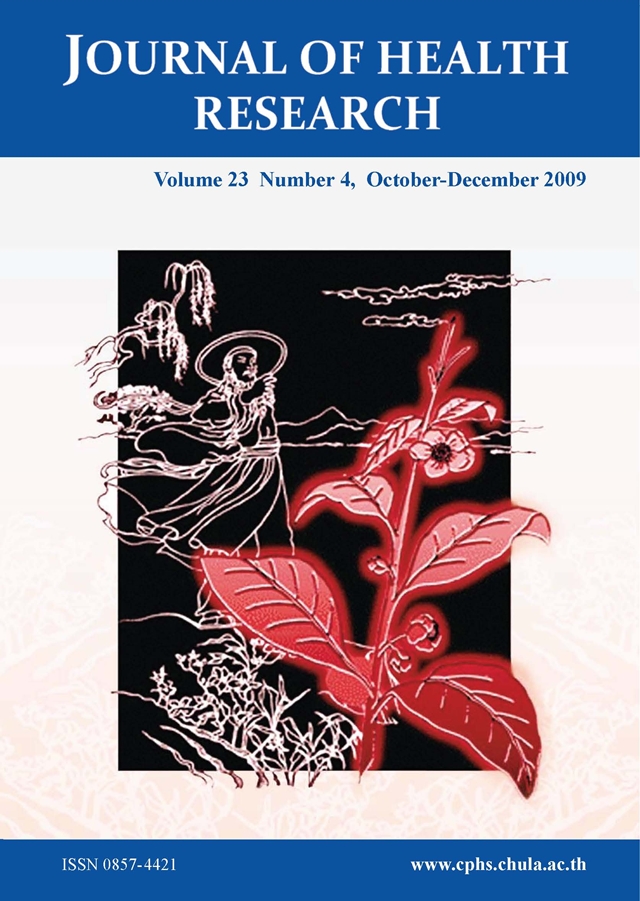Free Radical Scavenging Efficacy of Tamarind Seed Coat and Its Cosmetics Application
Keywords:
Tamaridus indica, Tamarind, antioxidant, total phenolics content, cosmeticsAbstract
Free radical scavenging activity and total phenolics content of Thai Tamarind seed coat extracts from the partition and maceration were compared. Tamarind seed coat suspended in 70% EtOH and then partitioned with CH2Cl2 and EtOAc, respectively. The EtOAc fraction posed the strongest antioxidant activity with highest total phenolics content (IC50 = 1.791 ppm; 63,691.00 mg GAE/100 g) followed by 70% EtOH (IC50 = 3.002 ppm; 21,425.78 mg GAE/100 g), Aq. (IC50 = 3.024 ppm; 16,105.30 mg GAE/100 g) and CH2Cl2 (IC50 = 5.122 ppm; 6,848.31 mg GAE/100 g) fractions, respectively. Maceration of seed coat powder in n-hexane, EtOAc and 95% EtOH, respectively, was conducted. The EtOAc extract had greater antioxidant activity and total phenolics content (IC50 = 2.164 ppm; 5,205.05 mg GAE/100 g) than the 95% EtOH extract (IC50 = 5.145 ppm; 713.24 mg GAE/100 g). Free radical scavenging activity was found related with the total phenolics content (R2 = 0.6507). The EtOAc from partition was developed in the stable with most preference milky base lotion which preliminary prepared at its IC50, two and three folds of IC50, individually. All formulations were found physically and chemically stables.







